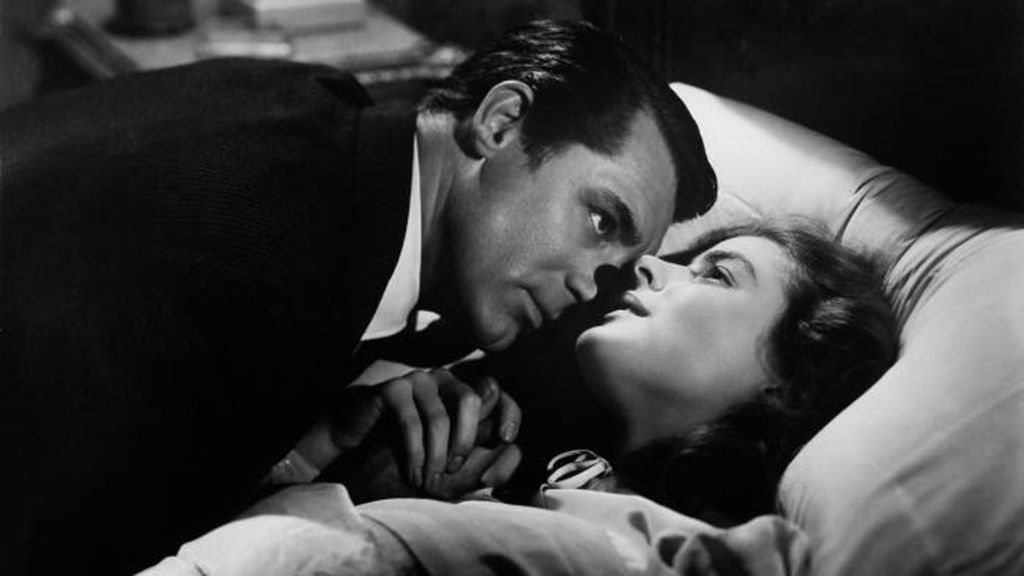In Hollywood’s Golden Age, filmmakers faced unprecedented creative restrictions under the Motion Picture Production Code, commonly known as the Hays Code. Among its rules was the supposed prohibition of kissing on screen for over three seconds, a guideline that Alfred Hitchcock masterfully avoided in 1946’s Notorious.
Videos by ComicBook.com
What Is the Hays Code?

The Hays Code emerged in 1930 as Hollywood’s response to mounting pressure from conservative critics and religious groups, who accused the industry of undermining traditional values. This backlash was inflamed by a series of scandals in the early 1920s, including the infamous Fatty Arbuckle case, in which the actor faced charges of manslaughter, and the mysterious death of director William Desmond Taylor, who was accused of having ties with criminals. The resulting self-imposed censorship system explicitly prohibited “excessive and lustful kissing,” along with various other content deemed inappropriate for audiences.
The Code’s implementation marked a dramatic shift from the more liberated silent film era of the 1920s when passionate romantic scenes frequently graced the screen. Initially lacking robust enforcement mechanisms, the guidelines had little impact until 1934, when the formation of the Catholic Legion of Decency and the economic pressures of the Great Depression forced studios to take the restrictions more seriously.
John Billheimer’s brilliant book Hitchcock and the Censors helps to paint the picture of censorship running wild during Hollywood’s golden age. The Production Code Administration’s strict oversight forced filmmakers to develop creative visual shorthand to suggest romance and passion. For instance, directors would cut to waves crashing on a beach to suggest sexual passion or show a fireplace’s flames growing stronger to indicate rising desire. The camera work itself developed specific meanings: a slow pan up from feet to face indicated sexual interest, while a fade to black after a kiss implied intimacy without showing it.
These visual codes became so well established that audiences of the era could easily “read” these signals. For example, in 1935’s Top Hat — which was recently featured in HBO’s The Penguin — the filmmakers cleverly worked around the Code’s prohibition of the word “damn” through wordplay about a horse’s “dam,” letting audiences connect the dots themselves. That’s definitely smart, but not as much as Hitchcock finding ways to feature prolonged intimacy on the silver screen.
Alfred Hitchcock’s Notorious Kiss Scene Made History
Hollywood studios devised the Hays Code to appease conservative groups that asked for movie censorship. The idea was to create a self-censorship document to prevent government intervention in the industry — it was better to set some soft rules than wait and see what sort of hard rule could come of confrontation.
While the three-second rule for kissing on screen is a myth, as there was no objective timer for displays of affection, the Hays Code did prohibit “excessive and lustful kissing.” However you interpret that line, three minutes of steaming hot kissing and flirtation doesn’t sound like something the Hays Code would allow. Yet, that’s what Hitchcock got away with in Notorious.
The scene unfolds in a Rio hotel room, where Cary Grant and Ingrid Bergman’s characters engage in an intricate dance of romance and conversation. They kiss briefly, then separate to discuss mundane matters like dinner plans and phone calls, only to come together moments later. The camera follows them as they move from the balcony to the interior, maintaining the intimate atmosphere through natural movements and whispered dialogue.
What makes the scene particularly remarkable is that it violated the spirit of the Code despite its technical compliance. The sexual tension continues uninterrupted for minutes, but Hitchcock could argue that each instance of lips touching was short enough to respect the Hays Code.
The Notorious kiss scene influenced how Hollywood approached romantic moments for decades. Hitchcock would continue to push boundaries with equally memorable scenes in his later films. In 1954’s Rear Window, he created a breathtaking moment where Grace Kelly’s face appears in slow motion before she gently kisses James Stewart. Years later, in 1964’s Marnie, he crafted another unforgettable kiss between Tippi Hedren and Sean Connery during a thunderstorm, with the camera positioned just eighteen inches from their faces.
Other directors found their own ways to work within the self-censorship. Michael Curtiz’s Casablanca (1942), Howard Hawks’ To Have and Have Not (1944), and Fred Zinnemann’s From Here to Eternity (1953) all managed to create iconic romantic moments while adhering to the Code’s constraints. However, while all these movies are classics that help to understand Hollywood’s history, Hitchcock and Notorious remain the most audacious challenge of the Hays Code’s kissing rule.
Notorious is currently available for streaming on Tubi.








